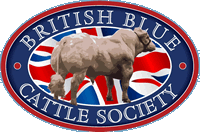Health Status for Embryo Transfer Recipients
Embryo transfer recipients (ETRs) are a potential bio-security risk for accredited and qualifying herds in Hi Health Herdcare and these risks may extend to current non health scheme disease such as Neospora.
As it is almost impossible to maintain complete separation between animals on the same premises we recommend that the health scheme rules on Biosecurity should be followed for all ETRs. In summary when ETRs are purchased from non-accredited sources it is advisable that they are tested prior to purchase and essential that on arrival they are placed in quarantine for 28 days and tested at the end of the quarantine period. Where testing of a group shows a mix of positive and negative animals it may be essential to extend quarantine and test again after a further period to be sure that there is no spread of infection through the group.
BVD
Key risks are from PIs and transient infection. There is little excuse
for a farm that is selling animals for breeding not to become BVD accredited.
Accredited herds should insist that any animals from non-accredited
herds are tested for persistent infection (antibody negative, virus
positive) prior to committing to purchase. On arrival at the purchaser
herd quarantine and testing is still required for animals from non-accredited
herds and animals from accredited herds that have come via a sale rather
than direct from the herd of origin. For BVD, antibody positive animals
that are not in calf are ‘safe’ provided it is clear that
infection is not circulating in the purchased group.
IBR and leptospirosis
Individual tests on the farm of origin and after quarantine are essential
for herds that are accredited free of these diseases or do not know
their infection status. Only antibody negative animals can enter such
herds without compromising their status.
Johne’s
Due to the way Johne’s is transmitted in a herd there is less
risk of direct spread from cow to cow and it may be possible to manage
ETRs in a quarantine situation. Disease risks are concentrated on the
risk to calves and therefore it remains preferable to use ETRs from
herds that are accredited free of Johne’s, have completed a qualifying
test for accreditation or at least are in a screening and eradication
programme and removing positive animals and their offspring (and not
passing such offspring on as ETRs). Johne’s risks can be reduced
by purchasing ETRs that have healthy Johne’s negative dams in
the herd of origin. If not from an accredited herd ETRs should all
be tested as antibody free on the Johne’s ELISA and if entering
the main herd must also be tested as negative by faecal PCR. These
tests may be performed at the herd of origin. Faecal PCR samples can
be pooled in batches of 5 animals from the same herd of origin to reduce
costs. If any positive test results are identified, all animals from
that herd of origin should be rejected, i.e., none should enter the
accredited herd.
Neospora
Neospora is passed from dam to calf during pregnancy and as such ETRs
are a major risk point for entry of Neospora into a pedigree herd.
There is very little risk of Neospora spread between animals once they
are born. The neosopora antibody test which confirms whether an animal
is positive is most sensitive around the time of calving, therefore
testing individual prospective ETRs pre-purchase may have little value.
Testing the dams of ETRs close to calving (it does not matter if this
is a subsequent calf) would be useful in avoiding ETRs from positive
dams, as these will almost always be infected. If this is not practical
testing the ETRs around the time they calve will provide useful information:
daughters of positive ETRs should not be retained for breeding, but
male calves are a dead end for the parasite and can be sold with a
clear conscience.
At Hi Health Herdcare we are always happy to advise on the basis of the particular on farm situation. We are happy to discuss possible approaches with members and their vets.

